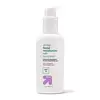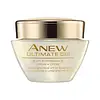What's inside
What's inside
 Key Ingredients
Key Ingredients

 Benefits
Benefits

 Concerns
Concerns

 Ingredients Side-by-side
Ingredients Side-by-side

Butyl Methoxydibenzoylmethane 1.5%
UV AbsorberEthylhexyl Salicylate 5%
UV AbsorberOctocrylene 6%
UV AbsorberWater
Skin ConditioningOctyldodecyl Neopentanoate
EmollientGlycerin
HumectantButyloctyl Salicylate
Skin ConditioningCetearyl Alcohol
EmollientPolysorbate 60
EmulsifyingGlyceryl Stearate
EmollientPEG-100 Stearate
Dimethicone
EmollientPhenoxyethanol
PreservativeEthylhexylglycerin
Skin ConditioningCaprylyl Glycol
EmollientCarbomer
Emulsion StabilisingTriethanolamine
BufferingDisodium EDTA
Ethylene Brassylate
MaskingDipropylene Glycol
HumectantDimethylheptenal
PerfumingButyl Methoxydibenzoylmethane 1.5%, Ethylhexyl Salicylate 5%, Octocrylene 6%, Water, Octyldodecyl Neopentanoate, Glycerin, Butyloctyl Salicylate, Cetearyl Alcohol, Polysorbate 60, Glyceryl Stearate, PEG-100 Stearate, Dimethicone, Phenoxyethanol, Ethylhexylglycerin, Caprylyl Glycol, Carbomer, Triethanolamine, Disodium EDTA, Ethylene Brassylate, Dipropylene Glycol, Dimethylheptenal
Water
Skin ConditioningEthylhexyl Methoxycinnamate 5%
UV AbsorberBenzophenone-3 4%
UV AbsorberButyl Methoxydibenzoylmethane 2.9%
UV AbsorberHomosalate
Skin ConditioningGlycerin
HumectantDimethicone
EmollientButylene Glycol
HumectantGlycolic Acid
BufferingBehenyl Alcohol
EmollientHydrogenated Polyisobutene
EmollientTrisiloxane
Skin ConditioningHydroxyethyl Acrylate/Sodium Acryloyldimethyl Taurate Copolymer
Emulsion StabilisingIsononyl Isononanoate
EmollientCetearyl Alcohol
EmollientIsohexadecane
EmollientPhytol
EmollientThiodipropionic Acid
Skin ConditioningPEG-100 Stearate
Ammonium Hydroxide
BufferingCetearyl Glucoside
EmulsifyingPhenoxyethanol
PreservativeDimethiconol
EmollientPolysorbate 60
EmulsifyingDisodium EDTA
PEG-150 Distearate
EmulsifyingCaramel
Cosmetic ColorantParfum
MaskingTiliacora Triandra Leaf/Vine Extract
AntioxidantEclipta Prostrata Extract
Skin ConditioningVitis Vinifera Fruit Cell Extract
Skin ConditioningMaltodextrin
AbsorbentThiazolylalanine
Skin ConditioningIsomalt
HumectantSd Alcohol 40-B
AstringentSaccharomyces/Copper Ferment
Skin ConditioningSaccharomyces/Magnesium Ferment
Saccharomyces/Malachite Ferment
Skin ConditioningSaccharomyces/Tourmaline Ferment
Skin ConditioningSaccharomyces/Zinc Ferment
Skin ConditioningCI 14700
Cosmetic ColorantSteareth-20
CleansingLecithin
EmollientPalmitoyl Tetrapeptide-10
Skin ConditioningPalmitoyl Tetrapeptide-7
Skin ConditioningPalmitoyl Lysyl Aminovaleroyl Lysine
Skin ConditioningWater, Ethylhexyl Methoxycinnamate 5%, Benzophenone-3 4%, Butyl Methoxydibenzoylmethane 2.9%, Homosalate, Glycerin, Dimethicone, Butylene Glycol, Glycolic Acid, Behenyl Alcohol, Hydrogenated Polyisobutene, Trisiloxane, Hydroxyethyl Acrylate/Sodium Acryloyldimethyl Taurate Copolymer, Isononyl Isononanoate, Cetearyl Alcohol, Isohexadecane, Phytol, Thiodipropionic Acid, PEG-100 Stearate, Ammonium Hydroxide, Cetearyl Glucoside, Phenoxyethanol, Dimethiconol, Polysorbate 60, Disodium EDTA, PEG-150 Distearate, Caramel, Parfum, Tiliacora Triandra Leaf/Vine Extract, Eclipta Prostrata Extract, Vitis Vinifera Fruit Cell Extract, Maltodextrin, Thiazolylalanine, Isomalt, Sd Alcohol 40-B, Saccharomyces/Copper Ferment, Saccharomyces/Magnesium Ferment, Saccharomyces/Malachite Ferment, Saccharomyces/Tourmaline Ferment, Saccharomyces/Zinc Ferment, CI 14700, Steareth-20, Lecithin, Palmitoyl Tetrapeptide-10, Palmitoyl Tetrapeptide-7, Palmitoyl Lysyl Aminovaleroyl Lysine
Ingredients Explained
These ingredients are found in both products.
Ingredients higher up in an ingredient list are typically present in a larger amount.
Also known as Avobenzone, this ingredient is a chemical sunscreen filter that provides protection in the UV-A range.
Avobenzone is globally approved and is the most commonly used UV-A filter in the world.
Studies have found that avobenzone becomes ineffective when exposed to UV light (it is not photostable; meaning that it breaks down in sunlight). Because of this, formulations that include avobenzone will usually contain stabilizers such as octocrylene.
However, some modern formulations (looking at you, EU!) are able to stabilize avobenzone by coating the molecules.
Avobenzone does not protect against the UV-B range, so it's important to check that the sunscreen you're using contains other UV filters that do!
The highest concentration of avobenzone permitted is 3% in the US, and 5% in the EU.
Learn more about Butyl MethoxydibenzoylmethaneCetearyl alcohol is a mixture of two fatty alcohols: cetyl alcohol and stearyl alcohol. It is mainly used as an emulsifier. Emulsifiers help prevent the separation of oils and products. Due to its composition, it can also be used to thicken a product or help create foam.
Cetearyl alcohol is an emollient. Emollients help soothe and hydrate the skin by trapping moisture.
Studies show Cetearyl alcohol is non-toxic and non-irritating. The FDA allows products labeled "alcohol-free" to have fatty alcohols.
This ingredient is usually derived from plant oils such as palm, vegetable, or coconut oils. There is debate on whether this ingredient will cause acne.
Due to the fatty acid base, this ingredient may not be Malassezia folliculitis safe.
Learn more about Cetearyl AlcoholDimethicone is a type of synthetic silicone created from natural materials such as quartz.
What it does:
Dimethicone comes in different viscosities:
Depending on the viscosity, dimethicone has different properties.
Ingredients lists don't always show which type is used, so we recommend reaching out to the brand if you have questions about the viscosity.
This ingredient is unlikely to cause irritation because it does not get absorbed into skin. However, people with silicone allergies should be careful about using this ingredient.
Note: Dimethicone may contribute to pilling. This is because it is not oil or water soluble, so pilling may occur when layered with products. When mixed with heavy oils in a formula, the outcome is also quite greasy.
Learn more about DimethiconeDisodium EDTA plays a role in making products more stable by aiding other preservatives.
It is a chelating agent, meaning it neutralizes metal ions that may be found in a product.
Disodium EDTA is a salt of edetic acid and is found to be safe in cosmetic ingredients.
Learn more about Disodium EDTAGlycerin is already naturally found in your skin. It helps moisturize and protect your skin.
A study from 2016 found glycerin to be more effective as a humectant than AHAs and hyaluronic acid.
As a humectant, it helps the skin stay hydrated by pulling moisture to your skin. The low molecular weight of glycerin allows it to pull moisture into the deeper layers of your skin.
Hydrated skin improves your skin barrier; Your skin barrier helps protect against irritants and bacteria.
Glycerin has also been found to have antimicrobial and antiviral properties. Due to these properties, glycerin is often used in wound and burn treatments.
In cosmetics, glycerin is usually derived from plants such as soybean or palm. However, it can also be sourced from animals, such as tallow or animal fat.
This ingredient is organic, colorless, odorless, and non-toxic.
Glycerin is the name for this ingredient in American English. British English uses Glycerol/Glycerine.
Learn more about GlycerinPeg-100 Stearate is an emollient and emulsifier. As an emollient, it helps keep skin soft by trapping moisture in. On the other hand, emulsifiers help prevent oil and water from separating in a product.
PEGS are a hydrophilic polyether compound . There are 100 ethylene oxide monomers in Peg-100 Stearate. Peg-100 Stearate is polyethylene glycol ester of stearic acid.
Phenoxyethanol is a preservative that has germicide, antimicrobial, and aromatic properties. Studies show that phenoxyethanol can prevent microbial growth. By itself, it has a scent that is similar to that of a rose.
It's often used in formulations along with Caprylyl Glycol to preserve the shelf life of products.
Polysorbate 60 is used to help stabilize products. It is a surfactant and emulsifier. These properties help keep ingredients together in a product. Surfactants help reduce surface tension between ingredients with different states, such as liquids and solids. Emulsifiers help prevent oils and waters from separating.
Polysorbate 60 is sorbitol-based and created from the ethoxylation of sorbitan. Ethoxylation is a chemical reaction used to add ethylene oxide. Sorbitan is a the dehydrated version of sorbitol, a sugar found in fruits.
In this case, the 60 comes from reacting 60 units of ethylene oxide with sorbitan.
Polysorbates are commonly used in medicine and foods.
Learn more about Polysorbate 60Water. It's the most common cosmetic ingredient of all. You'll usually see it at the top of ingredient lists, meaning that it makes up the largest part of the product.
So why is it so popular? Water most often acts as a solvent - this means that it helps dissolve other ingredients into the formulation.
You'll also recognize water as that liquid we all need to stay alive. If you see this, drink a glass of water. Stay hydrated!
Learn more about Water